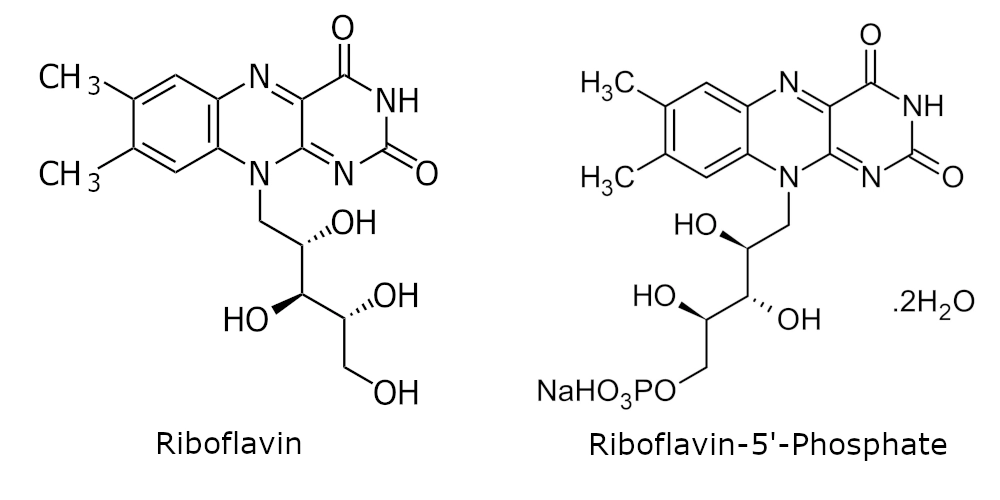Overview
Riboflavin, or Vitamin B2, is a water-soluble B Vitamin responsible for many metabolic processes involving energy production and cellular growth. The human body stores very little Riboflavin hence daily replenishment is important. Riboflavin can be found in foods such as meat, fish, eggs and green vegetables; while commercial production of Riboflavin comes from micro-organisms. Common forms of Riboflavin available on the market include Riboflavin and its coenzyme, Riboflavin-5′-Phosphate (also known as Flavin Mononucleotide, FMN).
Mechanism of Action
Riboflavin exists in food as either FMN or Flavin Adenine Dinucleotide (FAD). In the small intestine, FAD is broken up into AMP and FMN, which is then dephosphorylated to free form riboflavin. Absorption then takes place by an active, rapid, saturable transport mechanism. At higher concentrations, passive diffusion takes place. Once absorbed, Riboflavin is converted to FMN inside intestinal cells and then transported to the liver to be converted to FAD, which is then distributed to other parts of the body.
Riboflavin is an important catalyst for energy production in the Krebs Cycle. It is also essential for the conversion of Vitamin B6 and B9 into their coenzyme forms, and for the conversion of tryptophan into niacin. Deficiency in Riboflavin can also impair the absorption of iron, zinc and calcium. Moreover, Riboflavin helps maintain the integrity of mucous membranes, skin, eyes, endocrine system and nervous system.
Common Uses
Riboflavin Deficiency: Deficiency is rarely seen in developed countries. However symptoms that may appear include: sensitivity to light, enlarged tongue, sore throat and inflamed mucous membranes.
Cataracts Prevention: Riboflavin play a huge role in eye health hence it has been used for maintaining good eye health. Some studies indicate people with have a higher intake of riboflavin have a lower chance of developing cataracts.
Migraine Headaches: High doses of Riboflavin (400mg daily) seem to reduce the number of and intensity of migraine attacks.
Energy Production: Riboflavin is usually combined with other B Vitamins to increase energy production. It is also commonly added to sports products such as energy drinks.
Precautions
Speak to a health care professional if you are unsure how much Riboflavin you should be taking depending on your health status, especially if you are pregnant.
Side Effects
Riboflavin is very safe even in high doses as it and its metabolites are renally cleared rapidly.
Common: Yellowing of urine.
Dosage
Typical oral dosage forms range from 1mg to 100mg daily.
Recommended Daily Intake: 2.5mg for men. 1.8mg for women.
Riboflavin Deficiency: 10-20mg daily for 3 weeks, followed by a smaller daily dose.
Migraine Prophylaxis: 400mg daily for adults, 200mg-400mg daily for children above 12 years old. Duration 3-6 months.
A study in 1996 concluded that the maximum absorbed amount at any one time is 27mg, however, the highest dose used in the study was only 60mg. Therefore at higher doses, absorption may increase as passive diffusion takes over.
Riboflavin is light-sensitive, store away from sunlight.
Comparative Information
FMN is the more expensive, more soluble and more active form of Riboflavin. However, any ingested FMN will most likely be converted to free Riboflavin before being absorbed. Hence there is no real benefit over Riboflavin except for the initial improved solubility of FMN. Note that most studies done are based on Riboflavin.
References
https://www.sciencedirect.com/topics/medicine-and-dentistry/riboflavin
https://www.dsm.com/content/dam/dsm/meat-alternatives/documents/Vitamin-B2.pdf
https://ods.od.nih.gov/factsheets/Riboflavin-HealthProfessional/

